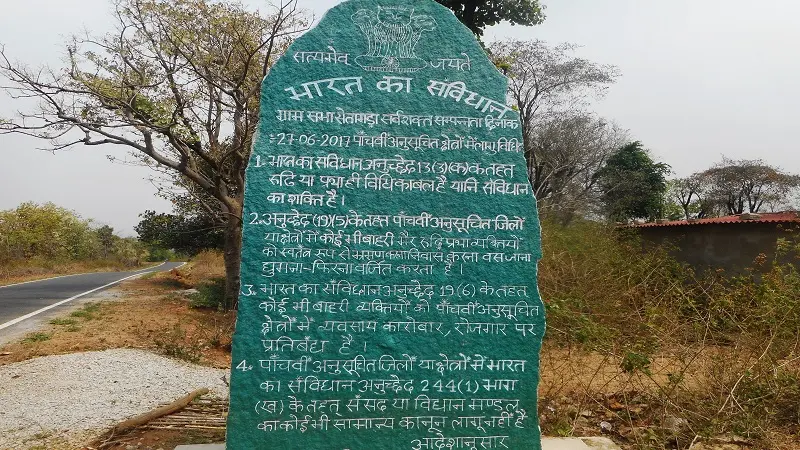
The Pathalgadi movement championed the rule of the gram sabha in Khunti. One of the primary reasons behind it was continuous attacks on tribal rights, forcible land acquisition and the weakening of village councils in Fifth Schedule areas. Here is an exclusive photo feature in collaboration with the Pulitzer Center.
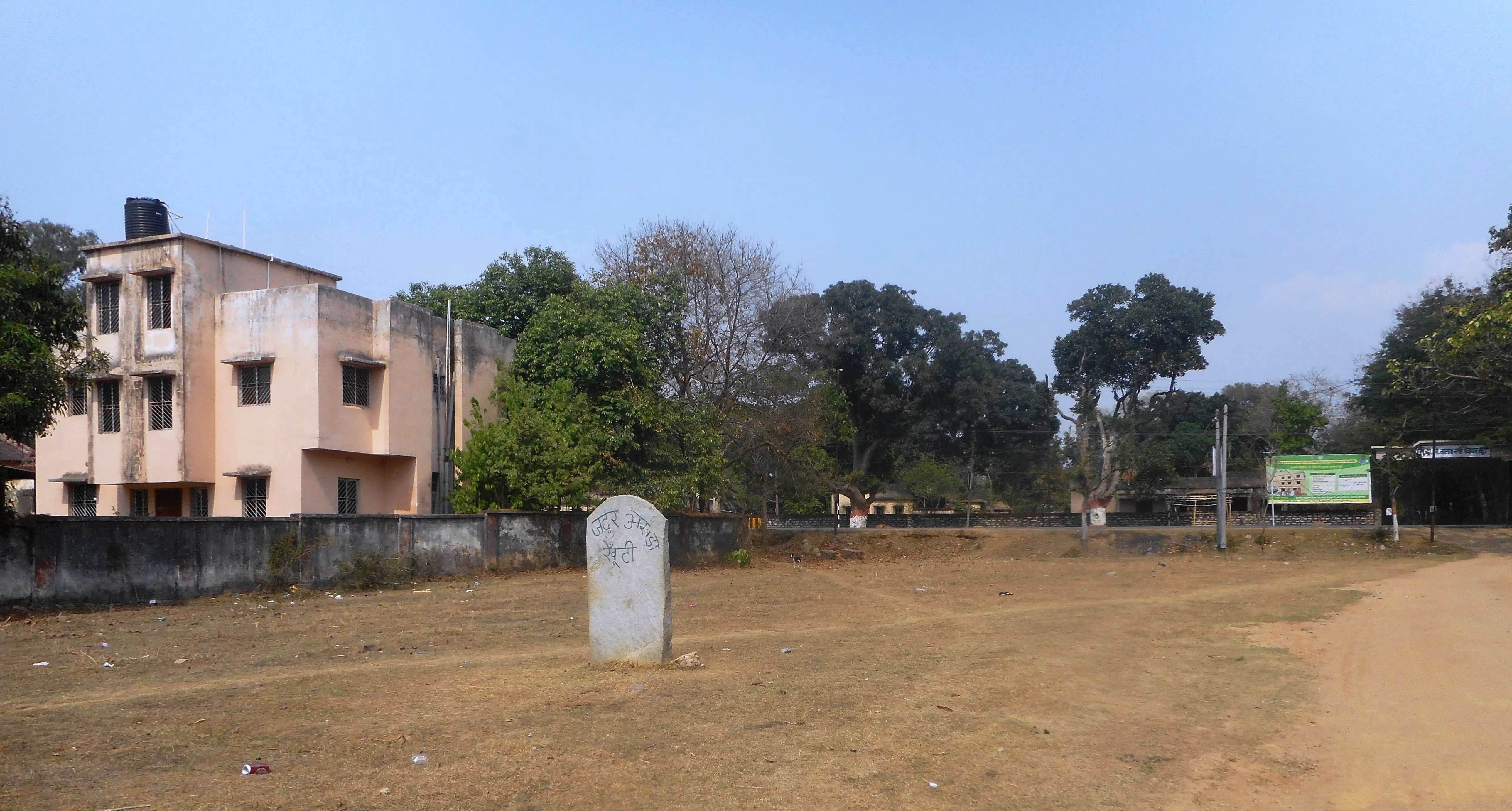
A stone slab marks the Munda community akhara or open space used for public events and festivals in Khunti. Erection of stones or pathalgadi is common in the district. However, there are various types of pathalgadi traditions followed by the Munda tribe here.
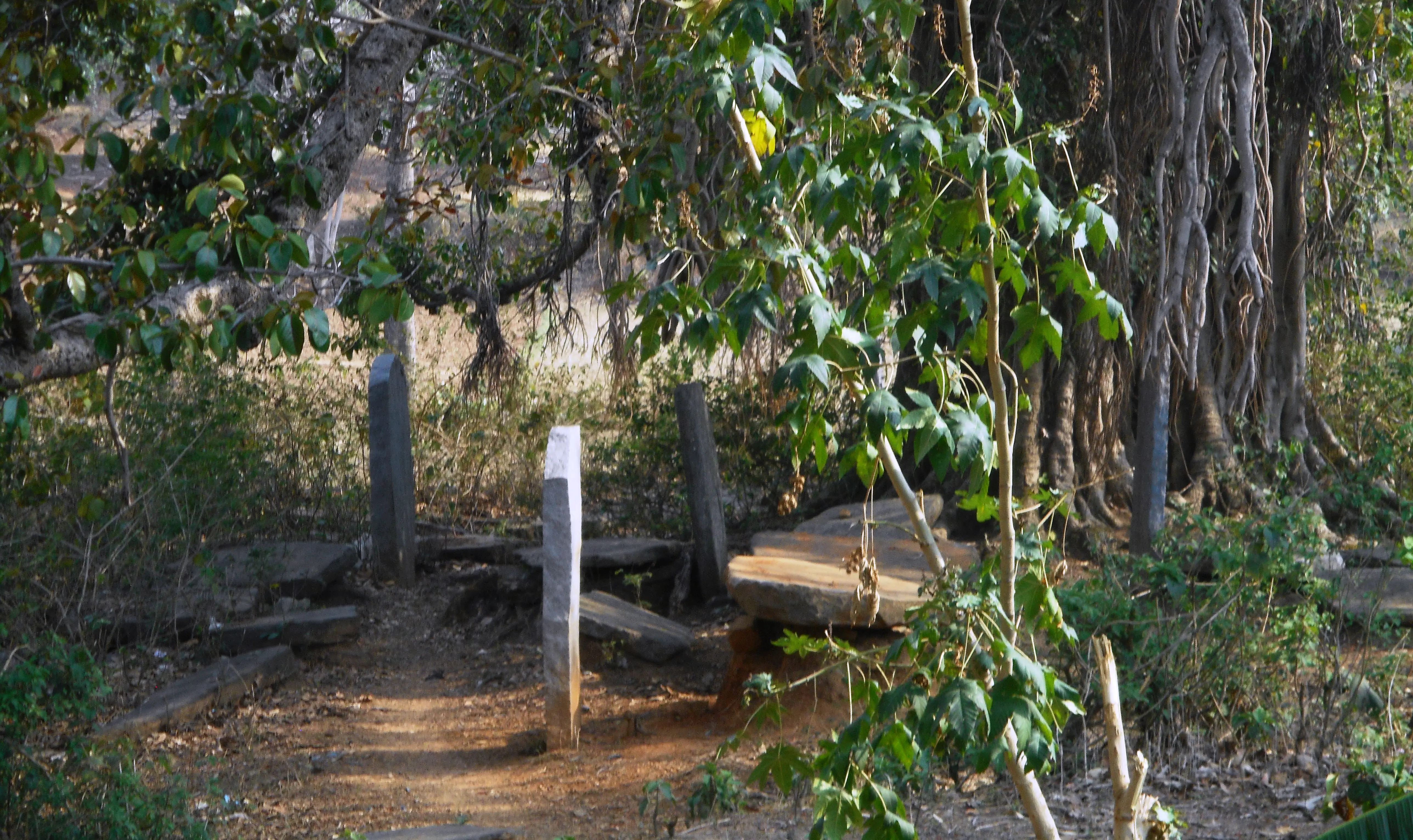
Such erect stones are commonly seen across the district. The reporter came across many instances of such slabs standing on the ground, especially during numerous trips to the villages. It is an age-old tradition of Munda Adivasis to erect stones in memory of the dead, to announce important events or to demarcate a boundary. This place looked particularly beautiful as the stones have been erected under foliage.
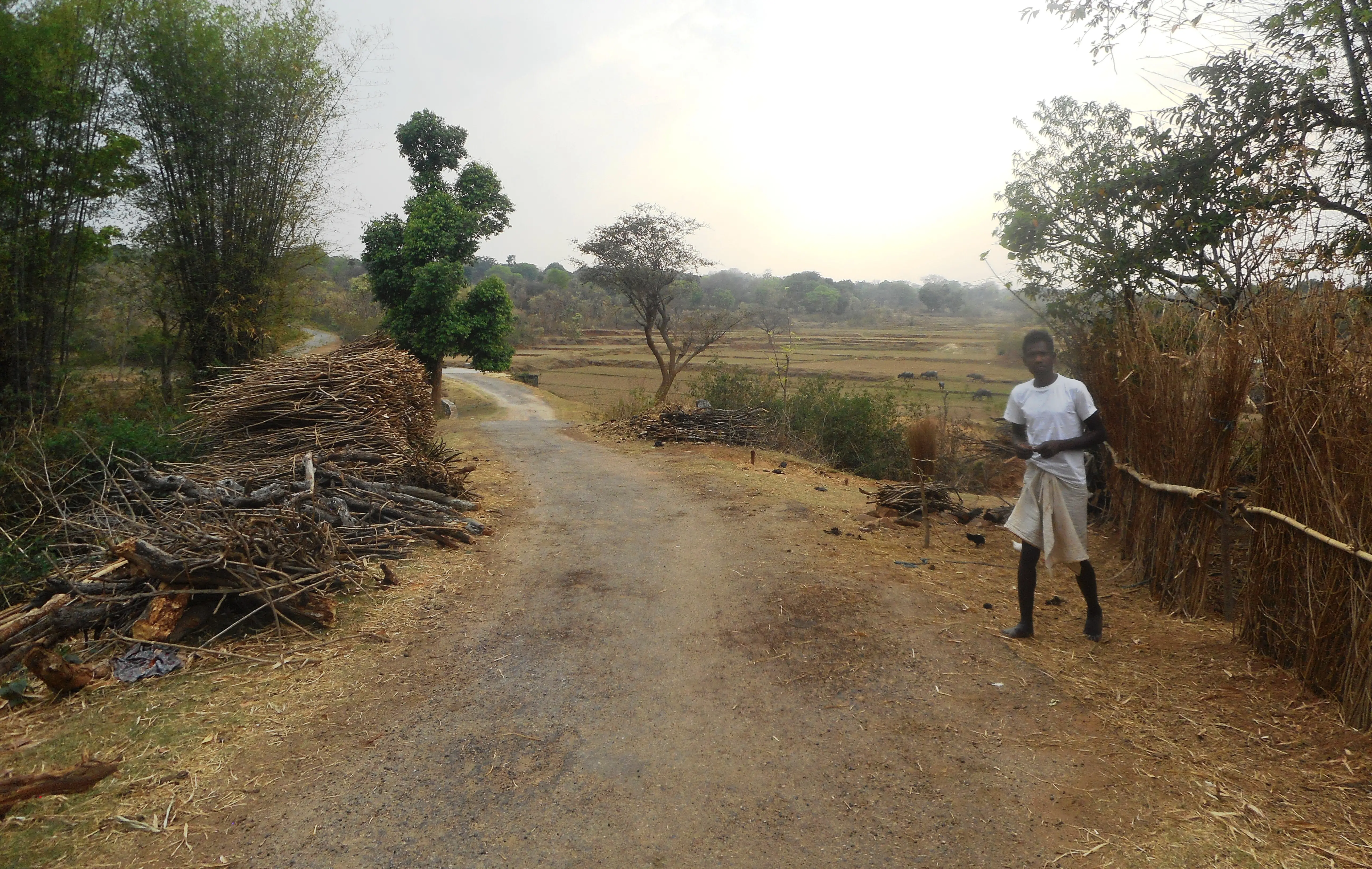
Shown in the photo is a typical village road in Khunti district. About 34 km from state capital Ranchi, the district witnessed the rise of the Pathalgadi movement during 2017-18, which started as an assertion of tribal rights over land and natural resources. This photo was taken in Baridih village, where the reporter attended a meeting of the Sati Pati cult, which has arrived in Khunti from Gujarat. Followers of this cult consider themselves to be the owners of India and refrain from using any kind of government facility. With cult members spreading in the villages of Khunti, tension is simmering between the Adivasis and the Sati Pati followers.
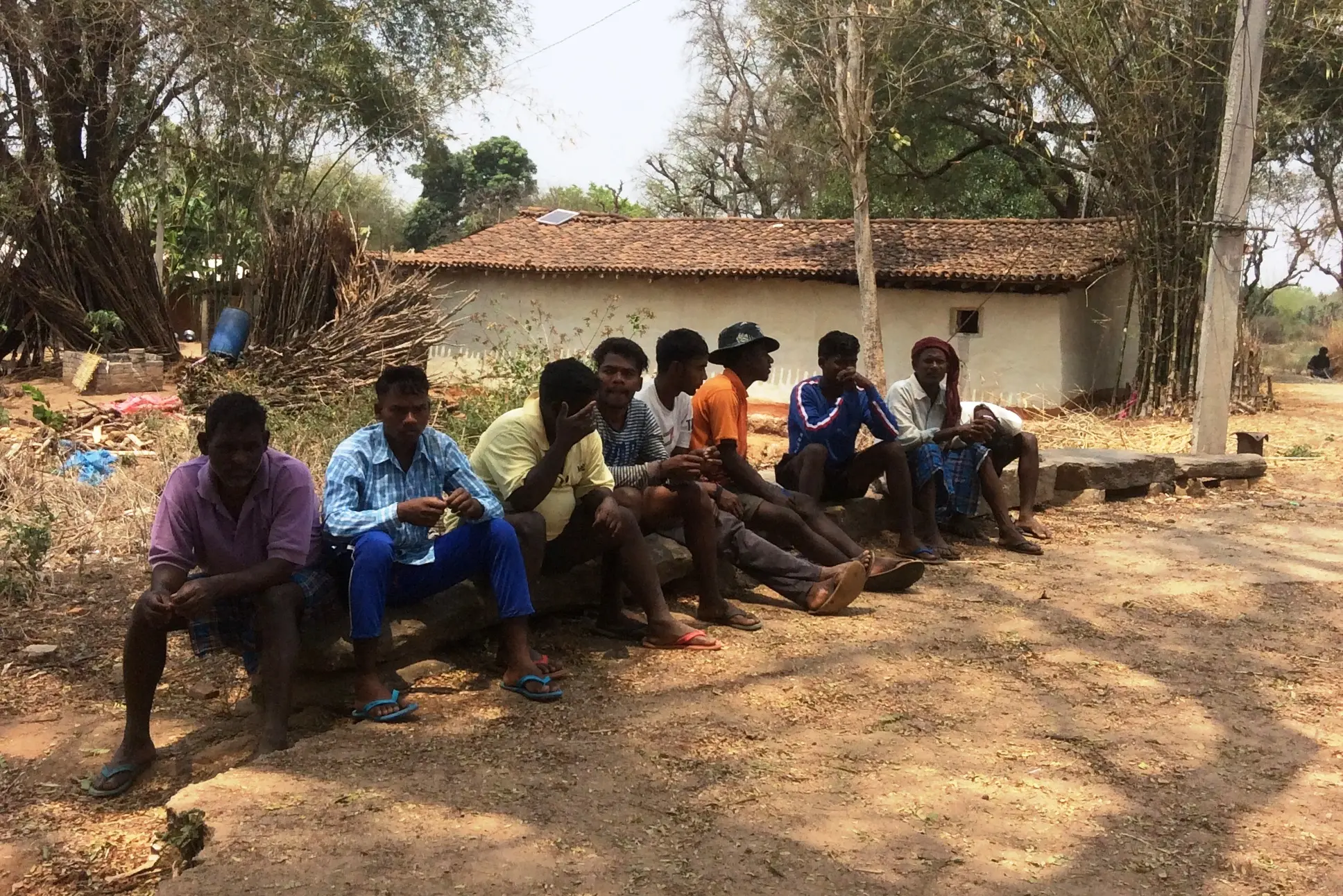
Munda tribals enjoy a break during a hot afternoon at Lamlum village in Khunti. “We did not want to erect the stones initially, but followed in others’ footsteps,” says resident Sunil Munda. He adds that supporters of the Pathalgadi movement ordered huge stones for inscribing sections from PESA and the Indian Constitution. While some are in support of the movement, others are opposed to it, he explains. Prem Mardi, an advocate at the Jharkhand High Court, says that the movement started as a result of power vested in gram sabhas in Fifth Schedule areas.
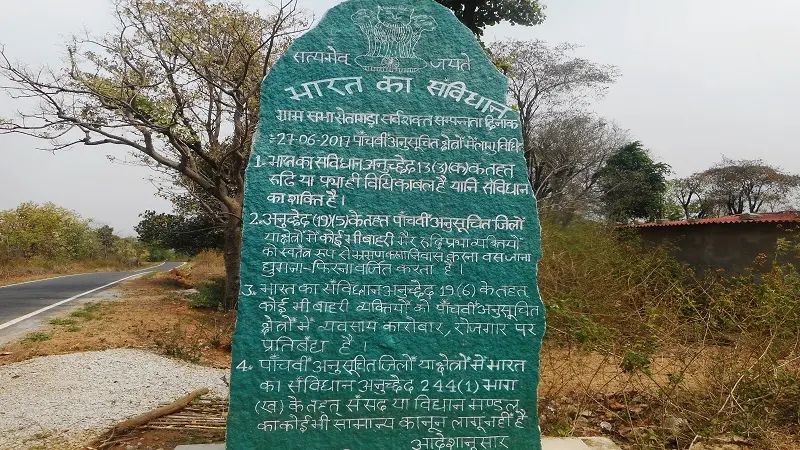

As a nonprofit journalism organization, we depend on your support to fund more than 170 reporting projects every year on critical global and local issues. Donate any amount today to become a Pulitzer Center Champion and receive exclusive benefits!
A green stone slab erected in 2017 under the heading Indian Constitution prohibits the entry of outsiders in the villages. The Pathalgadi movement was severely dealt with by the state and several supporters were thrown into prison or accused of sedition. However, a process to withdraw these cases has been initiated.
“The withdrawal process is still going on in a slow manner. The cases will not be withdrawn from the Jharkhand High Court, but from the lower courts as trials are on in lower courts. It is going through a legal process. There is a committee looking into the matter. The public prosecutor will have to submit an application in the court for withdrawal of the cases,” explains Md Shadab Ansari, advocate, Jharkhand High Court.
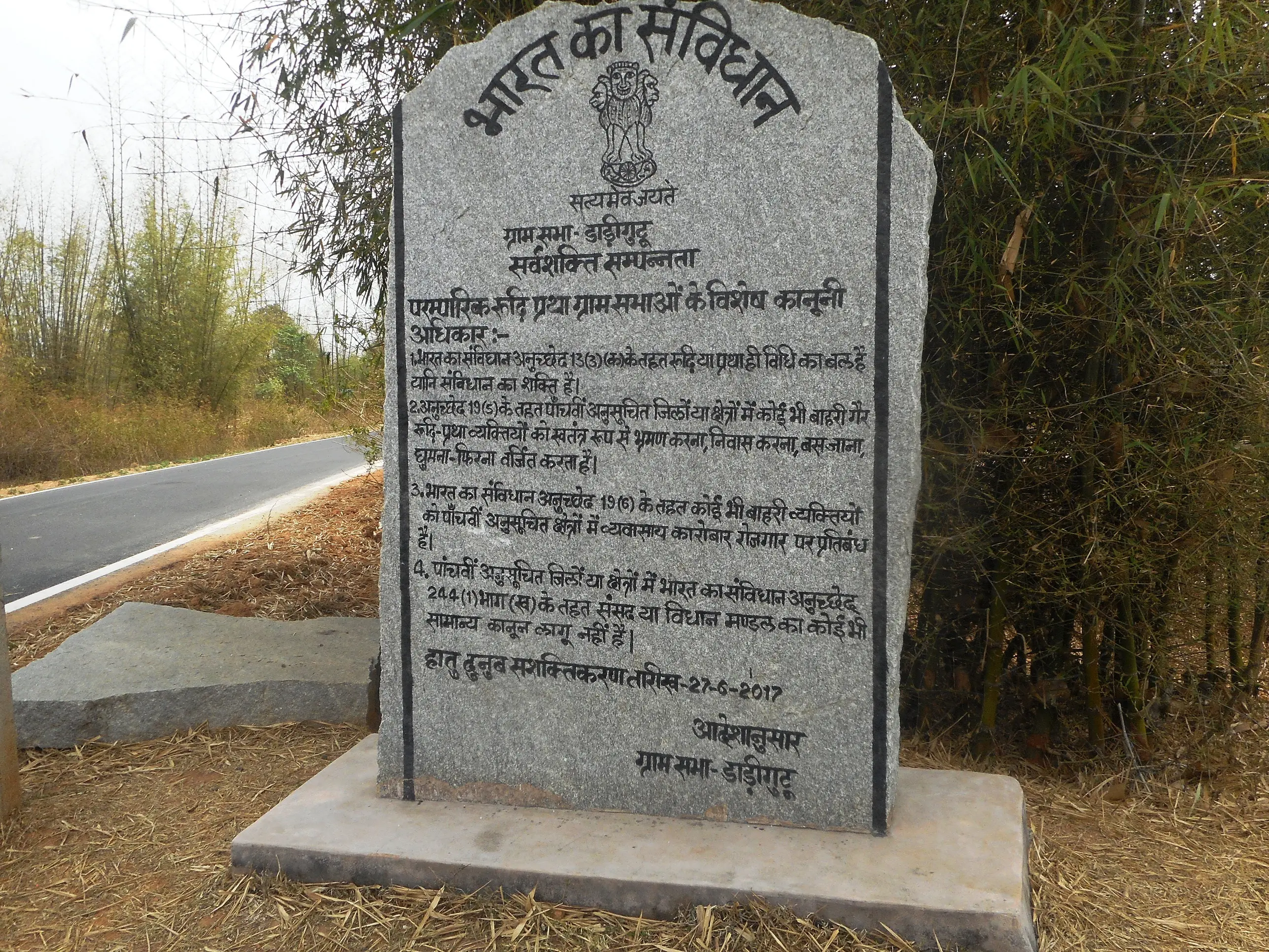
Mostly painted in green, this stone slab of Dariguttu panchayat is in grey. There are six blocks in Khunti district of Jharkhand. The major affected blocks during the Pathalgadi movement were Khunti, Murhu and Arki.
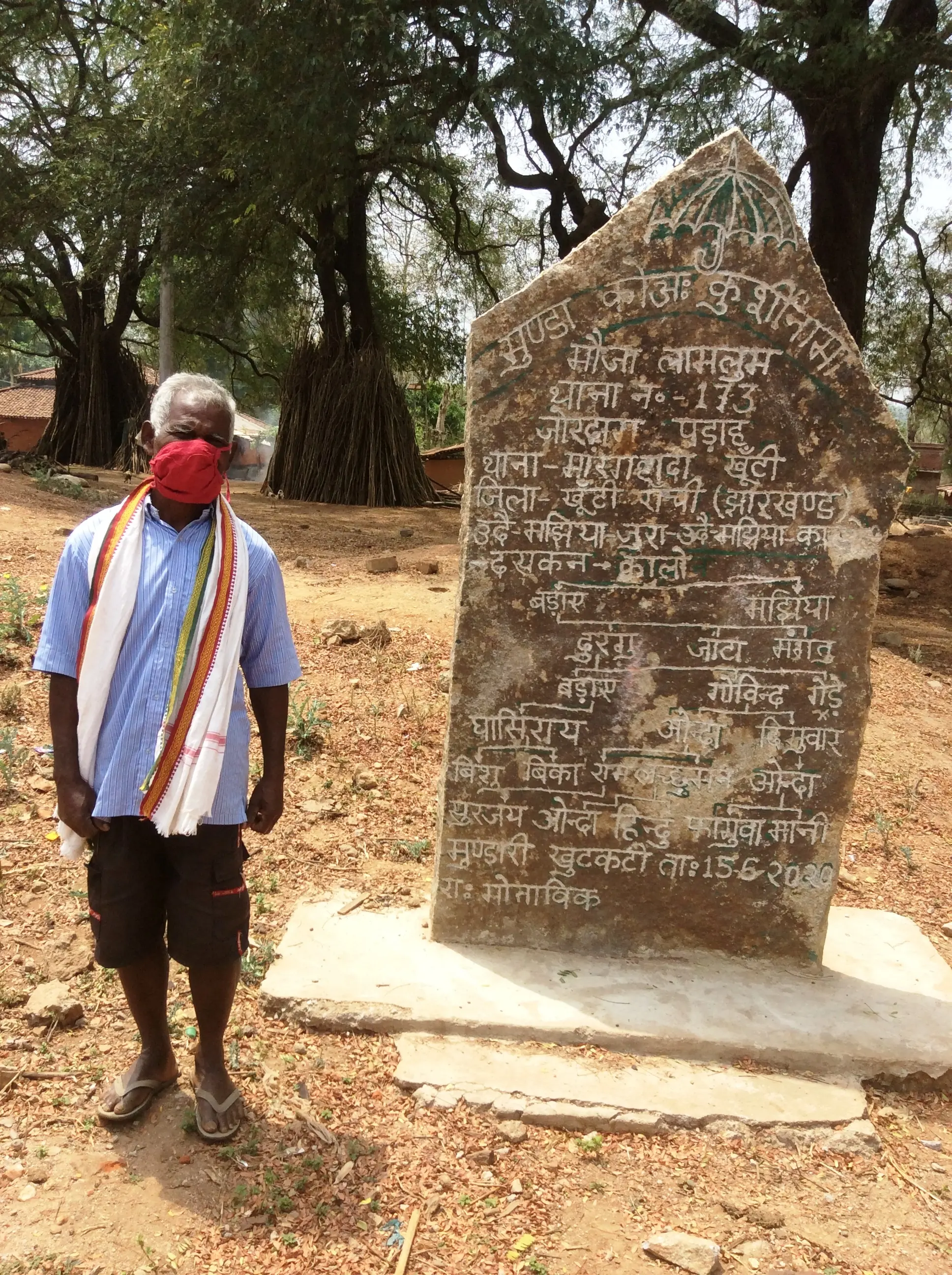
Etawah Munda, the headman of Lamlum village, says that this grey stone slab contains a list of the names of all those who have died in the village.
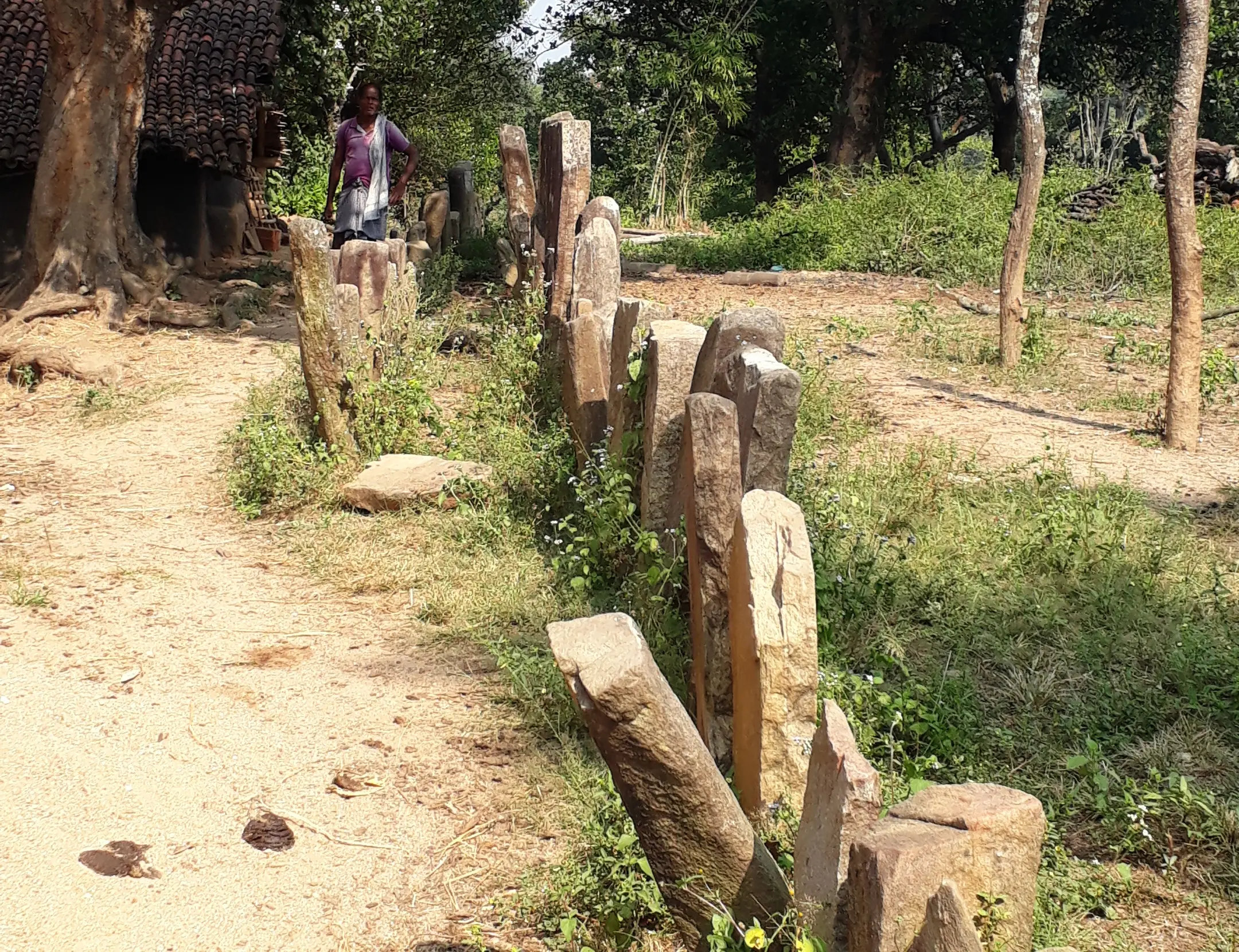
Shown is a row of stone slabs clicked during a previous assignment in Khunti’s Torpa block. In case of natural death, Munda tribals inscribe the deceased’s name on a stone slab. This is the original pathalgadi. However, when someone dies accidentally, such stone slabs are erected outside the village limits.






